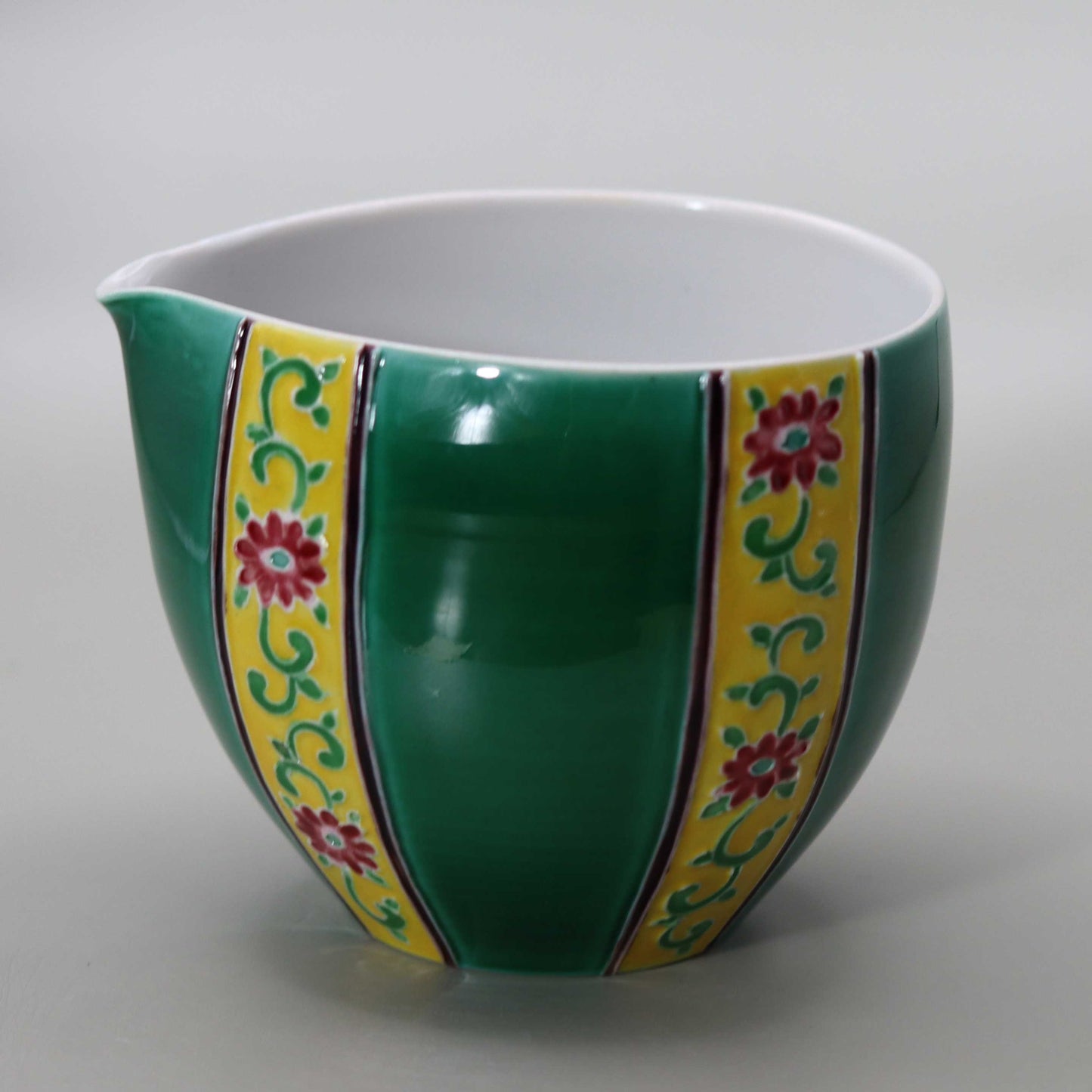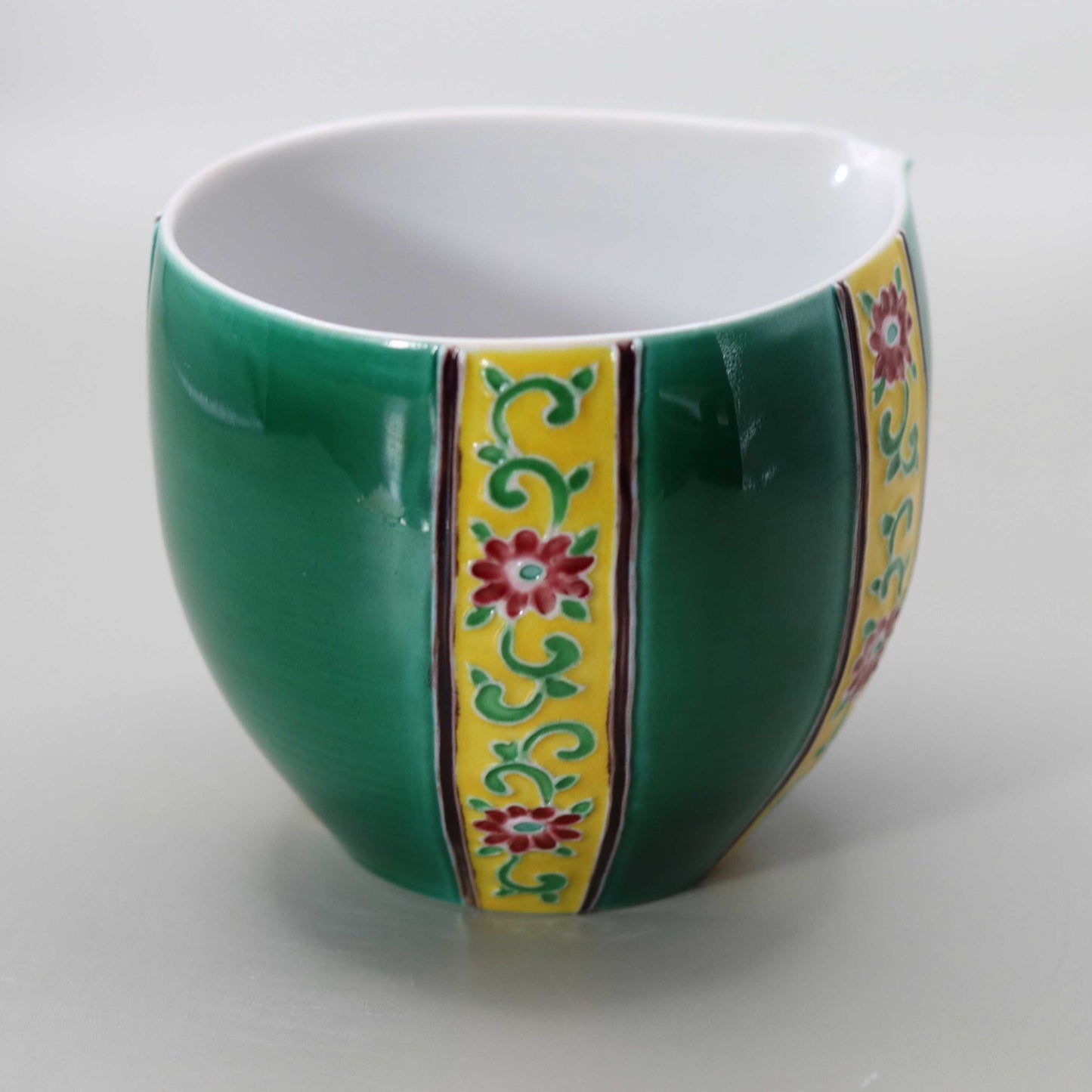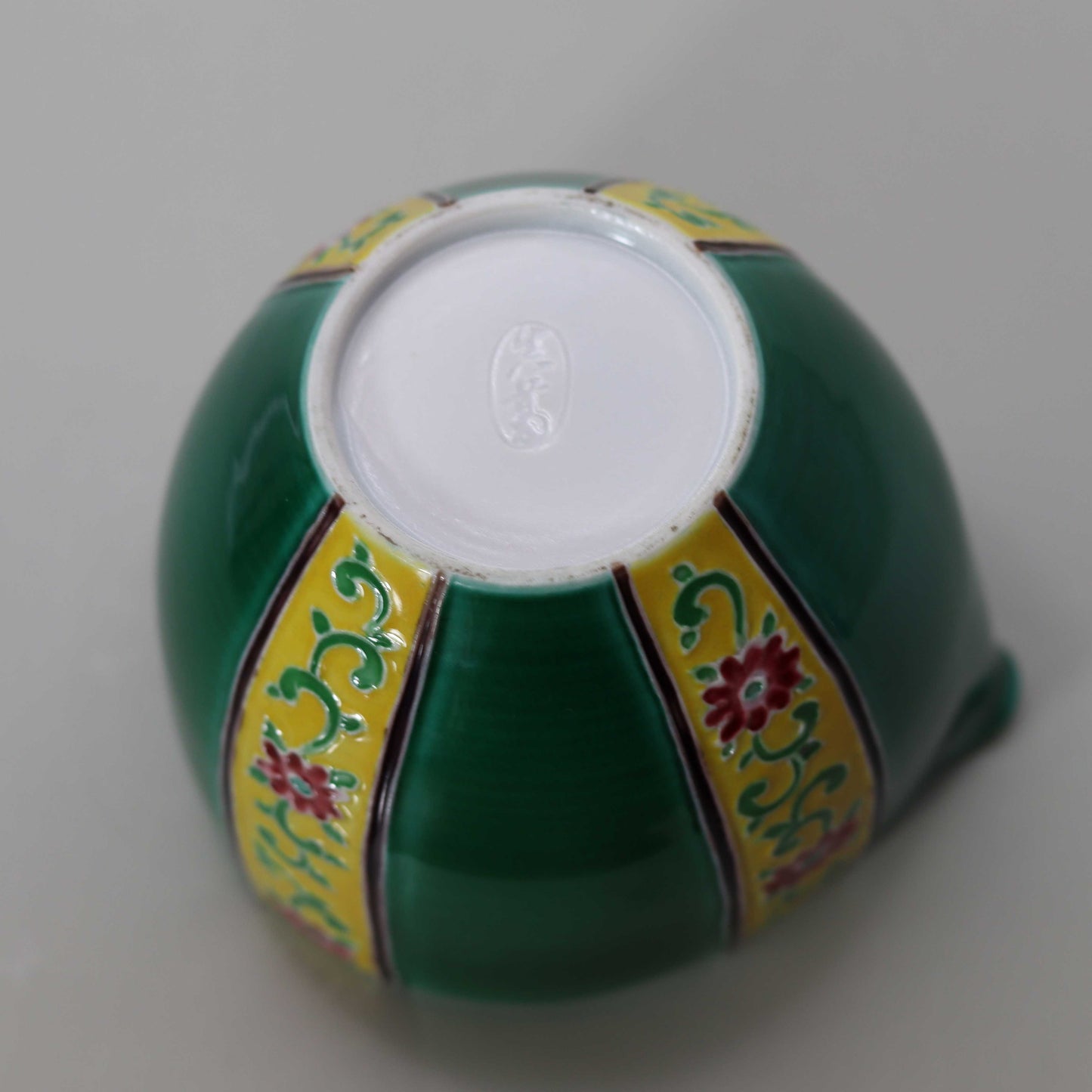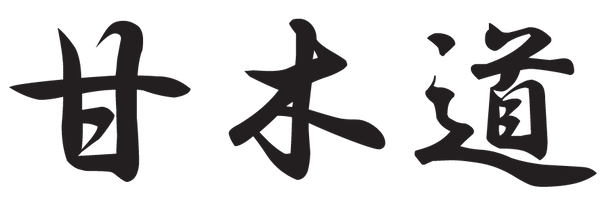Blue Kochi Chrysanthemum Arabesque Design Katakuchi by Miyagawa Kosai
Blue Kochi Chrysanthemum Arabesque Design Katakuchi by Miyagawa Kosai
Couldn't load pickup availability
Height: 8.0cm Width: 9.0cm x 10.0cm
Among the works of Miyagawa Kosai, the "Blue Kochi Chrysanthemum Arabesque Design Katakuchi" is a masterpiece that harmonizes traditional and modern beauty. This katakuchi is decorated with the "chrysanthemum arabesque" pattern, which has long been considered an auspicious pattern in Japan. The chrysanthemum flower was introduced to Japan as a medicinal herb and is considered an auspicious pattern symbolizing longevity, while arabesque patterns, which grow without interruption, have the meaning of prosperity and continuity. This pattern was also used as wedding furnishings in the Edo period, and its spirit is embodied in the "Blue Kochi Chrysanthemum Arabesque Design Katakuchi," which is expressed as a decoration with deep meaning.
The history and characteristics of Katakuchi
Katakuchi is a vessel with a spout on one side of the rim, and has been popular in Japan since the Jomon and Yayoi periods. Traditionally, it was used as a sake vessel to hold sake, and its wide mouth makes it ideal for enjoying the aroma of sake. The "Blue Kochi Chrysanthemum Arabesque Katakuchi" follows the shape of a katakuchi, but is glazed with blue glaze and colored using the Kochi technique, giving it high artistic value.
The fusion of Kochi and Kyo-yaki
"Koshi" refers to Cochinchina, an area around present-day Vietnam, and was given the name by the Chinese dynasty. This technique was brought from China to Japan, where it developed especially in Kyoto ware. Miyagawa Kosai's "Blue Koshi Chrysanthemum Arabesque Pattern Katakuchi" skillfully combines the unique deep blue color with the intricate chrysanthemum arabesque pattern, giving the piece a unique presence. This combination of color and pattern has also come to be loved as tea utensils, and is often used at tea ceremonies.
The tradition and evolution of Makuzu ware
Makuzu ware is known as a pottery with a rich variety of techniques among Kyoto wares. A wide variety of works have been produced using techniques such as Ninsei copy, Kenzan copy, overglaze painting, blue and white porcelain, iron painting, Kochi, and gold lining. Makuzu ware changes according to the needs of the times, and is particularly popular with many enthusiasts as tea utensils and sencha utensils. The Miyagawa Kosai family boasts a history of about 330 years and has produced a variety of pottery to suit the times. Its history began in Kyoto around 1680, when the first generation Miyagawa Kobee Masakazu was engaged in pottery production, and the techniques that have been passed down from generation to generation are also alive in the "Ao-Koshi Chrysanthemum Arabesque Pattern Katakuchi." This work is a modern masterpiece that combines the vividness of Ao-Koshi with the traditional chrysanthemum arabesque pattern, and finds new value in its historical background.
Domestic and international evaluation and future
Makuzu ware is highly regarded both in Japan and overseas as a ceramic work that embodies the splendor and elegance of Kyoto. The "Seikochi Chrysanthemum Arabesque Design Katakuchi" is a particularly outstanding piece, fusing traditional techniques with a unique aesthetic. Makuzu ware is loved in America, Europe, China, and elsewhere, and has many fans, so there is no doubt that it will continue to convey its charm to even more people in the future.
Share








Multi-Column
-
[I will send it to you quickly and carefully]
We carefully package each product in a way that suits it best.
Also, delivery times vary depending on the piece (vessel, etc.).
Items that already come with a box will be shipped within 1-3 days of the order date.
For items that require a box to be made after your order, it will take approximately 30 days for production to be completed and then shipped.
In either case, once we have confirmed your order, we will contact you by email to inform you of the delivery date.
-
[Requests when purchasing pottery]
Even products that look the same may differ slightly in color, shape, size, etc.
The way the glaze is used, the power of the kiln, the firing method, the season, and the humidity also affect the appearance of the pottery.
Please understand the individuality of each piece of pottery and enjoy the unique warmth of handmade.








